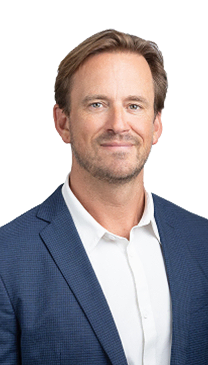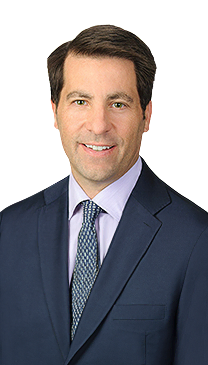Pharma Commercialization—Thought Leader Interview Series With The Lockwood Group
Mark Martin, Managing Director and Head of Pharma Commercialization interviews Matt Schecter, Founder and CEO, The Lockwood Group
Congratulations on your recent acquisition of Random42! Can you tell us how the partnership has been so far and what the combination brings to Lockwood’s clients?
I’m excited to be here, and thank you for having me, Mark! Regarding your question, we’re very excited to have Random42 as a part of the Lockwood team. As a medical communications company, we’re typically engaged as an Agency of Record and are asked to execute a variety of services across the medical communications ecosystem; some of those asks are in our wheelhouse and some are outside. With the Random42 partnership, we’re now able to offer our clients a more integrated suite of services that satisfy a larger portion of our clients’ requests. Whether it’s an MOA, MOD, microsite, AR, VR, or a hologram for an upcoming conference, Random42 is the market leader, and we’re excited to leverage that expertise for our clients. Historically, we were outsourcing medical animation for client work, so there was a natural adjacency to bring in Random42 and capture the incremental spend that our clients had already budgeted for. This allowed us to deliver immediate synergy to the team.
We’re approaching the one-year anniversary, and we’ve invested significantly in capex post-close to upgrade technology and infrastructure. We’re seeing that investment pay dividends in the quality of our output and our ability to scale. We’ve also added multiple creative, production, scientific, and account folks to the team to supplement growth.
The industry landscape for medical affairs, commercial, publications, and market access services is massive, growing rapidly, and extremely fragmented. How does Lockwood utilize scientific and therapeutic area expertise as a key differentiator when competing for business?
From the beginning, Lockwood has always been a science-first organization, and we’ve always believed that “content is king.” We’ve invested heavily in our scientific teams, and we think that our deep scientific knowledge differentiates us in the marketplace. Lockwood can clearly demonstrate an understanding of the science, disease mechanism, and therapeutic areas, and we leverage that knowledge to provide comprehensive and accurate insights to our clients. We have extensive experience across a variety of therapeutic areas and have cultivated strong relationships with KOLs and industry experts. Our relationships allow us to draw on the experts and solicit their perspectives on specific areas of focus. We’re able to leverage those perspectives for our clients and provide strategic guidance, synthesized scientific data, and clinical insight that help develop specific, tailored solutions. We think that’s invaluable.
We also consider ourselves thought leaders and view that as a differentiator. We believe we have true thought leadership across certain therapeutic areas, and we’ve leveraged that leadership to become a trusted partner to our clients. We’ve cultivated that partnership by having the personnel and experience to allow our clients to feel comfortable with our recommendations. We have members of our team that have been published as well as those that have given podiums at conferences and those that sit on expert panels and maintain relationships with KOLs. All of those things, taken as a whole, help to frame Lockwood as a leader in medical communications.
Can you discuss the importance of early engagement and education with HCPs during the pre-approval process? Engagement appears to begin earlier than ever; what do you think is driving this trend?
Early engagement and education with HCPs during the pre-approval process is becoming increasingly important. There are a number of factors that are contributing to this trend, including accelerated approval timelines, the evolving complexity of therapies, the growing importance of evidence generation, and the expanding regulatory landscape. Accelerated timelines in drug development and regulatory approval processes are becoming increasingly more common. As a result, companies have much less time to educate HCPs on new products before launch. Early engagement allows for dissemination of information that helps HCPs prepare for a new treatment.
Furthermore, modern therapies are increasingly complex. Biologics, gene therapies, personalized medicines, etc., are all highly complex, even in the eyes of the top KOLs. I’ve actually been in meetings where even the most highly regarded KOLs aren’t fully up-to-speed on certain aspects of a drug, which can be concerning. If the KOLs don’t fully understand the therapy, the community doctors are going to have a difficult time. Early engagement with KOLs eliminates that issue and ensures physicians are well informed on innovative treatments.
Similarly, early evidence generation continues to be a critical part of the pre-approval process. Early engagement with HCPs enables the industry to gather insights and feedback during pre-approval, which can help inform clinical trial design, identify unmet needs, and refine product development. Involving the HCPs early can help establish an understanding of the real-world implications of a product and address any gaps that may be found.
Can you dive a bit deeper into the motive for regulators to encourage this early HCP engagement?
Regulators are arguably as emphatic as any stakeholder in the ecosystem about the importance of early engagement. Regulators do not want physicians prescribing drugs to the wrong audiences. Early engagement encourages the exchange of scientific information, which fosters good relationships between industry and HCPs, ultimately leading to better outcomes for patients.
How is the role of the patient evolving, and how does that factor into HCP-focused medical communications?
The healthcare landscape is moving toward a more patient-centric approach, which highlights the critical nature of early HCP engagement. HCPs are required to be more informed on therapy benefits, therapy risks, the ideal patient profile, and where a given drug fits in the treatment paradigm. That way, when a patient does come in, HCPs can have a meaningful conversation and help decision-making from a patient perspective. HCP-focused medical communications drive the knowledge behind those interactions.
In your view, are there any other key trends driving change in medical communications? Are there any important industry trends being overlooked?
Unsurprisingly, the rapid advancement of technology is transforming the way that medical communications are disseminated. If you looked at where we were 10 years ago versus where we are today with online platforms, virtual conferences, webinars, social media, etc., our reach is significantly more comprehensive and the community is more interactive. For example, Random42 has the ability to create videos that help physicians understand what they’re prescribing as well as the ability to share a disease journey with the patient receiving therapy. That interaction was not possible 10 years ago, at least at the level with which it is today.
That trend in technology and digital is also rapidly accelerating patient empowerment. Patients are taking on a much more active role in decision-making than they were previously. In the past, patients would largely defer to their physician, but now with the wealth of information online and in online health communities, they are empowered and questioning prescribing doctors.
The other trend—not that it’s being overlooked—is omnichannel. In the past, there were very specific channels of dissemination. Now, communication channels are expanding rapidly, including social media, online communities, scientific publications, conferences, traditional print media, etc. There is a strong focus on how to approach clients from an omnichannel perspective. We believe “content will always be king,” and we feel that accurate scientific messaging is critical; however, dissemination of that content across the optimal array of channels is also very important.
As the industry realizes a return to live events, how do you balance a hybrid HCP engagement approach that relied so heavily on digital execution from 2020 to 2022?
As we look at the landscape for 2023 and beyond, we’re very focused on assessing the audience preference when considering the right balance between live and digital events and engagement. There are unique advantages to both live and digital execution, and we’ve been able to balance both of those extremely well. We now ask clients, “what is your objective,” and we work to build an engagement strategy around that objective, depending on KOL or decision-maker preferences.
One of the benefits of the Random42 acquisition was its ability to enable Lockwood’s digital capabilities to facilitate virtual engagement with things like VR headsets, augmented reality, interactive webinars, virtual conferences, online communities, and educational resources. The goal was to build out our virtual engagement format so that we could offer clients a comprehensive solution that was not one or the other. We still anticipate having both live and digital, and we want to be able to maintain continuity in our messaging across all formats.
Contacts
-
Mark Martin Managing Director Global Head of Pharma Services

-
Larry DeAngelo Managing Director Global Co-Head of Corporate Finance

-
Brandon Bleakley Director
